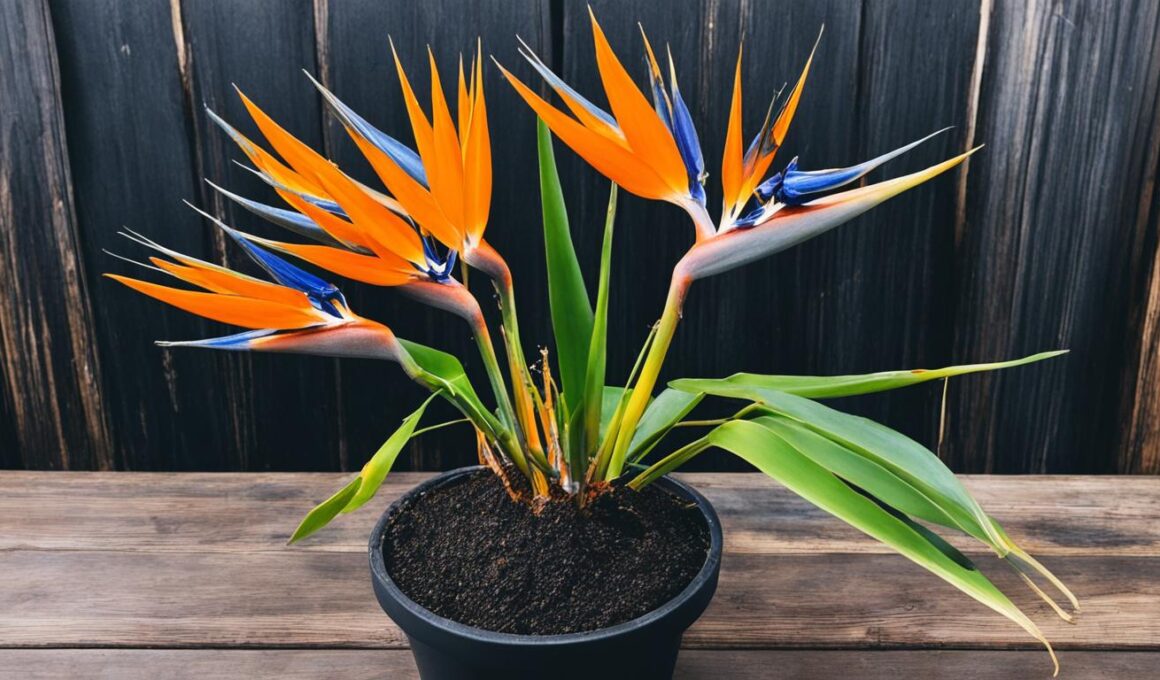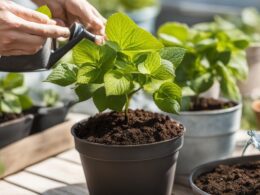If you have an underwatered Bird of Paradise, don’t worry! We have expert tips to help you revive and rejuvenate your plant, ensuring it regains its lush foliage and vibrant beauty. The Bird of Paradise, scientifically known as strelitzia nicolai, is a popular indoor plant cherished for its large glossy leaves and stunning flowers.
However, underwatering can cause distress in your Bird of Paradise, leading to wilting leaves and a lackluster appearance. But fear not, with the right care and attention, you can bring your underwatered Bird of Paradise back to life.
In this guide, we will explore common signs of distress, provide solutions to common issues, and share valuable tips on how to care for your Bird of Paradise, ensuring it thrives in its ideal environment. By following our expert advice, you’ll soon have a vibrant and flourishing Bird of Paradise gracing your indoor space.
Let’s dive into the world of Bird of Paradise care and uncover the secrets to reviving your underwatered plant.
Common Signs of Distress in a Bird of Paradise
In order to revive your Bird of Paradise successfully, it’s crucial to first identify the signs of distress that it may be experiencing. By recognizing these signs, you’ll be able to determine the best course of action for its revival. Some common signs of distress to look out for include:
- Underwatering: If the leaves of your Bird of Paradise are wilting or drooping, it may be a sign that it’s not receiving enough water. Additionally, the leaves may become brown and crispy at the edges.
- Overwatering: On the other hand, if the leaves are yellowing, mushy, or falling off easily, it’s possible that you’ve been overwatering your plant. Overwatering can lead to root rot and suffocate the plant’s roots.
- Lighting Issues: Insufficient or excessive light can also cause distress in a Bird of Paradise. If the plant is not getting enough light, its leaves may become pale and weak. Conversely, if it’s exposed to too much direct sunlight, the leaves may develop brown spots or burn marks.
By being observant and understanding these signs, you’ll be able to address the specific issue your Bird of Paradise is facing and take the necessary steps to revive its health.
Common Issues and Solutions for a Bird of Paradise
While Bird of Paradise plants are known for their resilience, several common issues can impact their health. It’s essential to identify these problems promptly and implement the appropriate solutions to ensure your plant thrives. Here are some common issues you may encounter and their corresponding solutions:
Potential Root Rot in Bird of Paradise
Root rot is a serious concern for Bird of Paradise plants. It is caused by overwatering or inadequate drainage, leading to excessive moisture around the roots. To prevent root rot:
- Ensure your plant is potted in well-draining soil.
- Allow the top inch of soil to dry out before watering again.
- Avoid leaving standing water in the plant’s saucer or tray.
- Consider repotting your Bird of Paradise and providing fresh, well-draining soil if root rot has already occurred.
Pests in Bird of Paradise
Pests can also pose a threat to the health of your Bird of Paradise. Common pests include mealybugs, spider mites, and aphids. To control and eliminate pests:
- Regularly inspect your plant for signs of infestation, such as webbing or discoloration.
- Remove pests manually using a soft cloth or sponge dipped in soapy water.
- Consider using organic insecticidal soap or neem oil to treat severe infestations.
- Isolate the affected plant to prevent the spread of pests to other indoor plants.
Nutrient Deficiencies in Bird of Paradise
Insufficient nutrient levels can result in poor growth and lackluster foliage in Bird of Paradise plants. To address nutrient deficiencies:
- Fertilize your plant regularly using a balanced, water-soluble fertilizer during the growing season.
- Ensure the fertilizer contains essential nutrients like nitrogen, phosphorus, and potassium.
- Follow the fertilizer manufacturer’s instructions for proper dilution and application.
- Monitor your plant for signs of improved growth and adjust the fertilization accordingly.
Environmental Stress in Bird of Paradise
Bird of Paradise plants can experience environmental stress due to factors such as inadequate lighting, extreme temperatures, or drafts. To mitigate environmental stress:
- Place your plant in a location with bright, indirect sunlight, preferably near a window.
- Avoid exposing the plant to cold drafts and temperature extremes.
- Maintain consistent humidity levels by using a humidifier or placing the plant on a pebble tray filled with water.
- Protect your Bird of Paradise from harsh outdoor conditions during winter.
By addressing these common issues and implementing the appropriate solutions, you can ensure the overall health and vibrancy of your Bird of Paradise plant.
Conclusion
In conclusion, reviving an underwatered Bird of Paradise requires proper care and attention. By adjusting the lighting, watering, and fertilization, addressing common issues, and maintaining optimal conditions, you can revive your plant and ensure its healthy growth.
Remember to closely monitor your Bird of Paradise, providing the necessary care and being patient as it recovers. With these expert tips, you can revive your Bird of Paradise and enjoy a vibrant and thriving indoor plant in your space.
So, if you’ve noticed signs of distress in your Bird of Paradise, don’t worry. By following the steps outlined in this guide, you can give your plant the care it needs and bring it back to life. Give your Bird of Paradise the attention it deserves, and in no time, you’ll witness the beauty of its lush foliage and vibrant flowers once again.
Can Overwatering a Bird of Paradise Cause the Same Damage as Underwatering?
Overwatering a Bird of Paradise can lead to root rot, stunted growth, and yellowing leaves. Conversely, underwatering can cause wilting, browning, and slow growth. It’s important to find the right balance for healthy plants. It’s like restringing a weed wacker – too tight or too loose, it won’t work properly.










